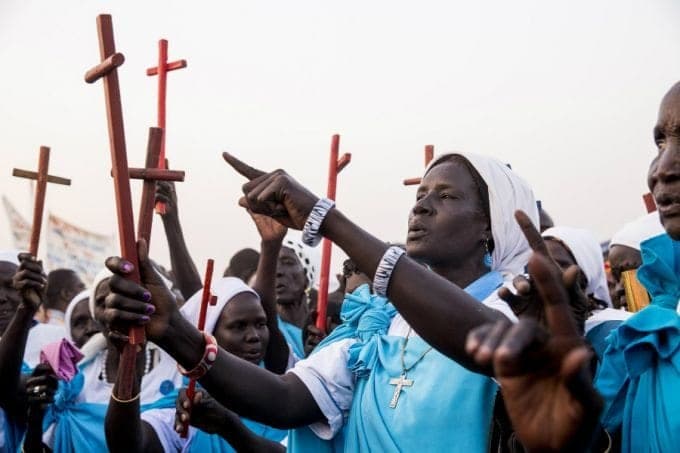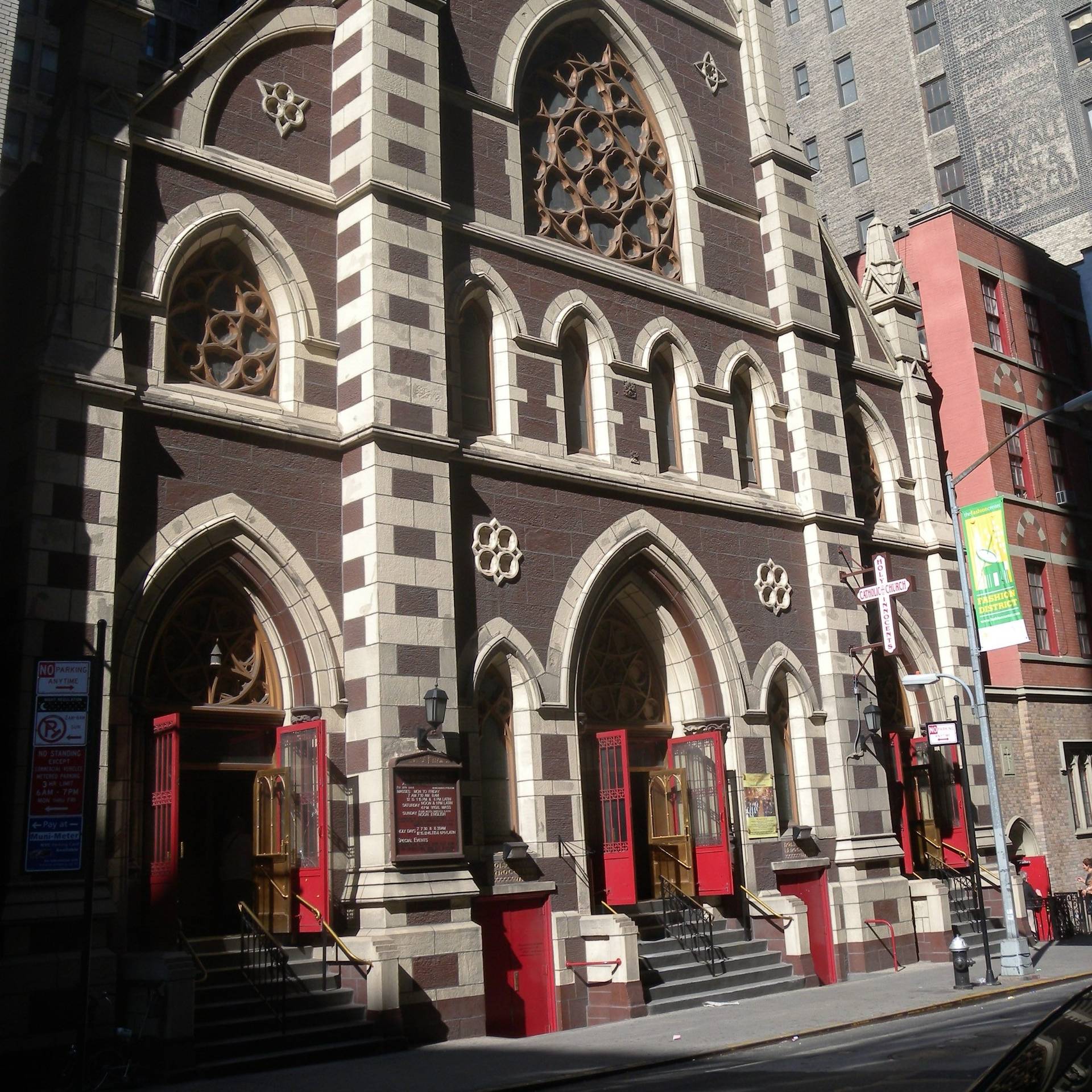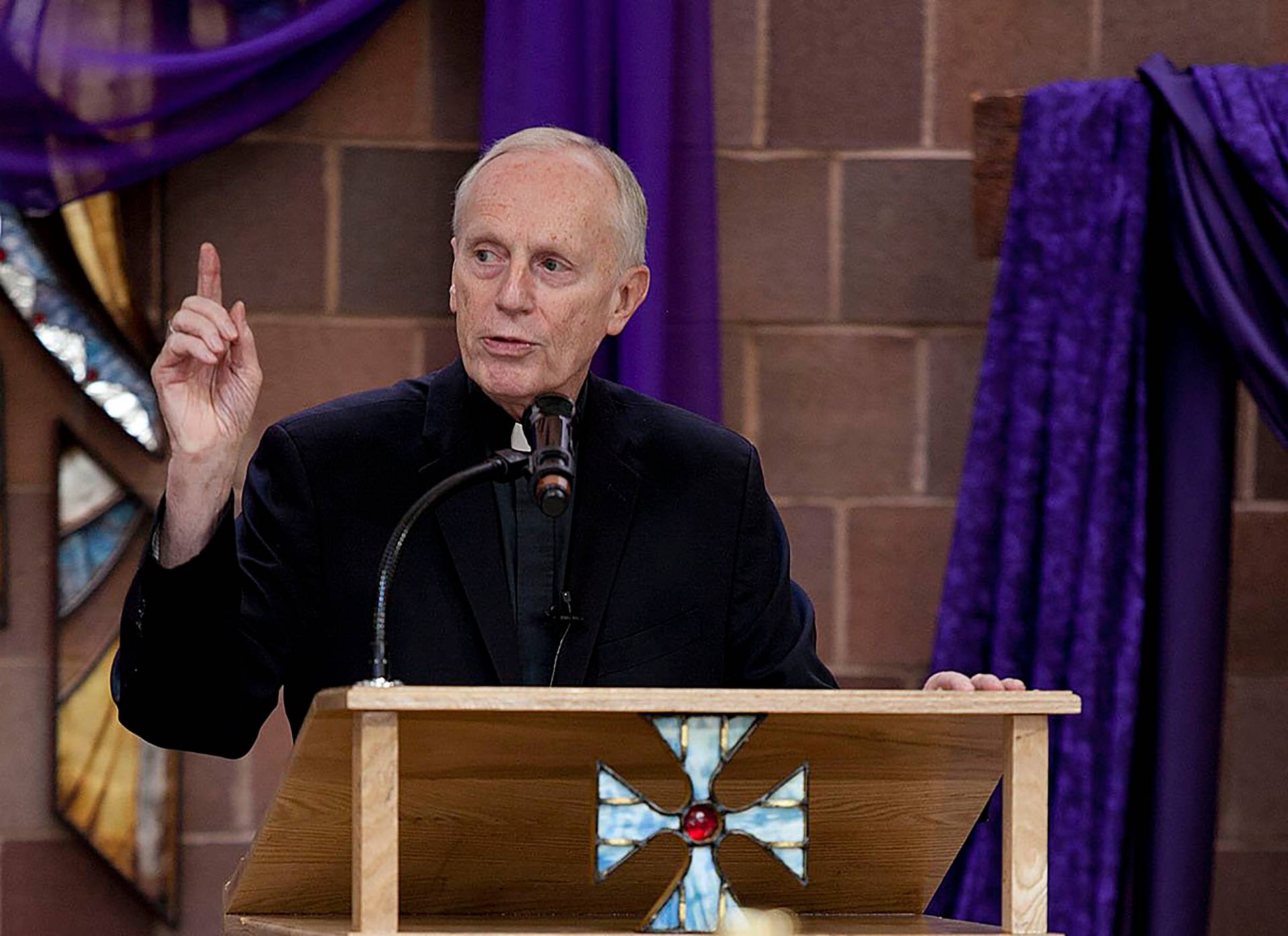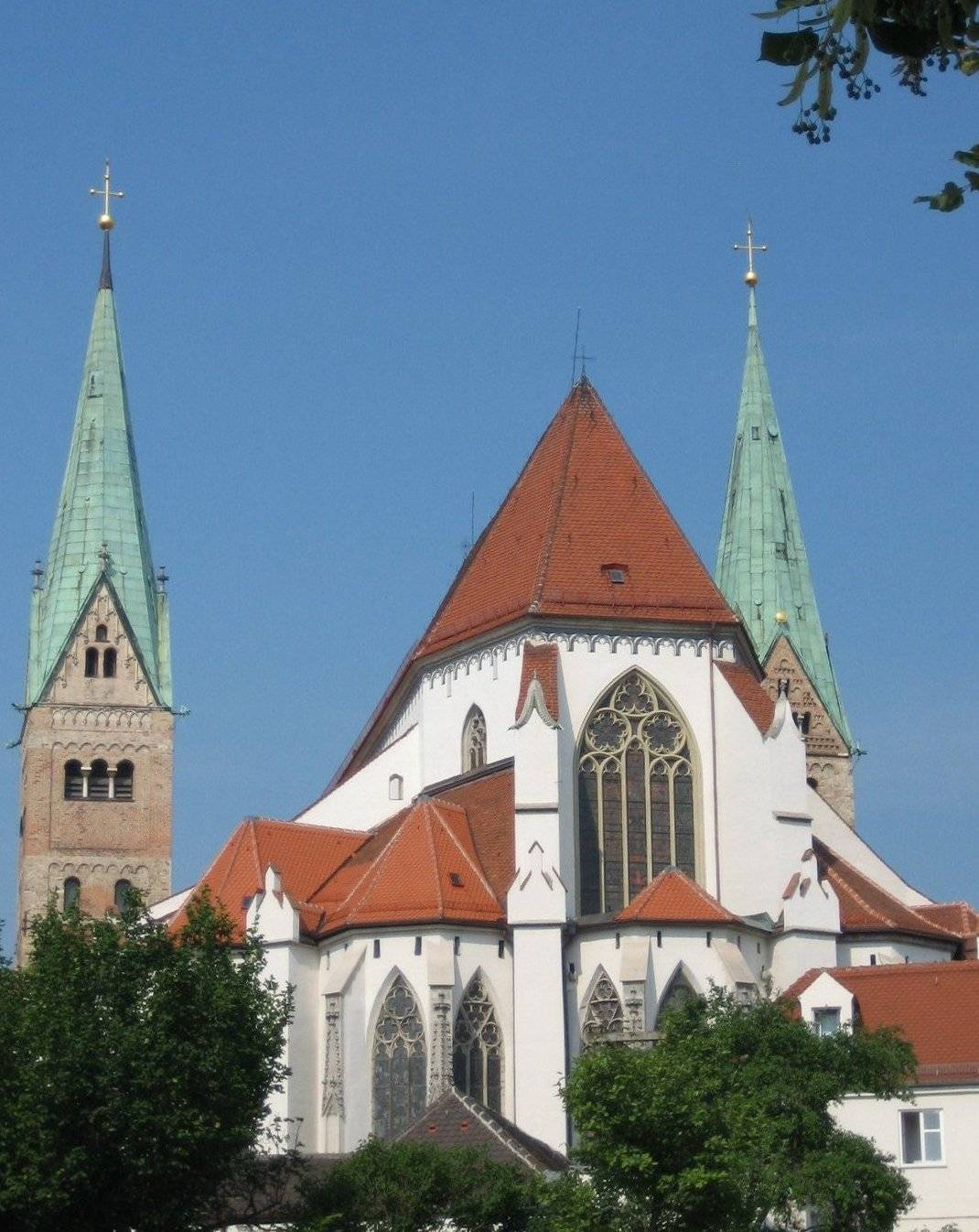ROME – In January, Foreign Policy magazine brought out its annual list of conflicts to watch in the coming year. It’s usually a mix of no-brainers, spasms of violence that have been going on for a long time and show no signs of abating, and occasionally bold forecasts about where things might blow up next.
Francis has a fairly impressive track record as a “peace pope,” from his role in helping to head off an anti-Assad Western offensive in Syria in 2013 to his trip to the Central African Republic last year, which helped create the conditions for a successful national election and a peaceful transfer of power in that war-torn nation.
Also last year, Francis kept the pressure on for a peace deal in Colombia, in part by dangling the prospect of a trip there once the ink was dry, and even brought together in the Vatican President Juan Manual Santos and his main political rival, former President Alvaro Uribe.
Conventional wisdom has it that Pope’s Francis’s global influence may be in decline, given the way the political winds seem to be blowing against him with Trump’s victory in the United States and the growing importance of far-right populist movements in Europe. On the other hand, it’s a big and complicated world, and Francis repeatedly has show a capacity to defy expectations.
In that light, it’s an interesting thought exercise to compare the Foreign Policy list with the pope’s agenda, and try to guess where his political and diplomatic lightning might strike.
Here are the ten hot-spots the magazine identified:
- Syria and Iraq
- Turkey
- Yemen
- Greater Sahel and Lake Chad Basin
- Democratic Republic of Congo
- South Sudan
- Afghanistan
- Myanmar
- Ukraine
- Mexico
Where among these settings is it plausible to believe Francis could make a difference?
For sure, the pontiff is likely to continue to be focused on Syria and Iraq, which have been near-constant concerns since his election three and a half years ago – in part for humanitarian reasons, in part out of concern for the embattled Christian minority in both nations.
Even if Francis didn’t want to emphasize Syria and Iraq, Trump’s controversial executive order on refugees makes dealing with its implications essentially unavoidable.
However, the pope’s influence in either majority-Muslim country is limited, and realities on the ground are shaped by a complex intersection of domestic and foreign influences that so far have defied the best efforts of statesmen everywhere to unravel.
Further, security conditions in both for the moment make the prospect of a papal visit appear dim, reducing Francis’s ability to lay hands on the situation directly.
DRC and South Sudan
Better prospects for a “Francis effect” are probably the Democratic Republic of Congo and South Sudan, since both are places the pontiff may well visit in 2017. He’s said he wants to go to Africa again, and those two spots are believed to be the front-runners for his destinations.
Moreover, both are nations where the Catholic Church plays a pivotal role in public life.
About half of the total population of more than 70 million is Catholic, making the Church the largest religious body in the country, with one scholar calling it the country’s “only truly national institution apart from the state.”
Back in the late 90s, as then-Zaire was falling apart and the new Democratic Republic of Congo was being born, the future Cardinal Laurent Monsengwo of Kinshasa even served as President of a transitional “High Council of the Republic,” making him in effect the de facto head of state.
That role for Catholic prelates continues to this day, as Congo’s bishops recently negotiated an accord between the government and the opposition designed to pave the way for a peaceful transfer of power.
On Feb. 3, the Holy See and Congo signed a framework governing church/state relations in the country, giving Vatican diplomats even more entree and official standing.
In South Sudan, almost forty percent of the population is Catholic, and although precise census numbers are hard to come by, that’s likely enough to make it the largest single religious body in the new nation.
Once again, the Church’s influence is pervasive. President Salva Kiir Mayardit is himself a Catholic, and Catholic leaders and activists are credited with having played key roles in paving the way for national independence in 2011, and since then have become seen as the country’s most effective and trusted peace-makers.
Given all that, Francis will be in places where the Church has considerable political and social capital, where national leaders are inclined to take popes seriously, and where the crowds and enthusiasm he’s likely to draw will turn heads.
Mexico
Mexico is another place where Francis’s reach might extend, given that it’s the second-largest Catholic nation in the world, and still recalls his successful visit to the country in February 2016 – one that famously ended with a visit to the U.S./Mexico border to make a statement about immigrant rights, followed by a verbal spat with Donald Trump triggered by comments Francis made on the papal plane en route to Rome.
Foreign Policy speculates that a major immigration crackdown and campaign of deportations under a Trump administration could further deteriorate security conditions in Mexico, where stretches of the country are already effectively lawless and under the control of drug gangs.
Francis made the stand against that violence a core part of his message during his Mexico trip, and could build on that at a distance in 2017, urging both the country itself and its neighbor to the north to do what’s necessary to combat it.
Another way Francis could make a difference is with whom he chooses to replace Cardinal Norberto Rivera Carrera in Mexico City, in effect the leader of the country’s bishops. Rivera turns 75 in June, the usual retirement age for bishops, and although Francis isn’t obliged to accept, there are some signs he may be inclined to make a change.
If Francis finds a bishop known as an activist and an effective voice of the people, he could enhance the impact of the Mexican church at just the right moment.
Ukraine
In Ukraine, the pontiff’s role in the conflict in the east between government forces and separatist rebels backed by Russia has been a bit debated.
The pope has called for an end to the fighting multiple times, and even organized special collections to support its victims, recently dispatching more than $6 million in aid as a first installment.
Yet some Ukrainian Greek Catholics, one of the Eastern churches in communion with Rome, believe Francis has been a bit soft in his assessment of Russia’s role in the conflict, not wanting to upset what has been a sort of diplomatic partnership on Syria and elsewhere with the government of President Vladimir Putin, or to disrupt ecumenical ties with Putin’s backers in the Russian Orthodox Church.
By this stage, Francis has built up capital both with Putin and the Russian Orthodox, and it will be interesting to see whether he chooses to spend some of that capital in 2017 by pushing the Russians to end its “hybrid war” in the country, which includes a mix of force, cyberattacks, propaganda, and financial pressures.
Myanmar
In the abstract, Myanmar might seem an unlikely setting for Pope Francis to be able to move the needle, a largely Buddhist nation of 53 million in southeast Asia.
Further, Francis got into a sort of row at a distance with the Myanmar government in 2015 when he addressed the suffering of the Rohingya people, a largely Muslim ethnic group of 1.3 million located in the western part of Myanmar, formerly known as Burma.
The Rohingya are not recognized by the government and, because they’re regarded as illegal immigrants, do not hold citizenship. They’ve long complained of mistreatment and oppression, and the United Nations has described violations of their rights as “crimes against humanity.”
“Let’s think of those brothers of ours of the Rohingya,” Francis said during a Vatican session with youth in August 2015.
“They were chased from one country and from another and from another,” he said. “This is a conflict that has not resolved, and this is war, this is called violence, this is called killing!”
He came back to the subject this week, during an event for the International Day of Prayer and Awareness Against Human Trafficking.
“Speaking of migrants, driven out, exploited … I would like to pray today with you in a special way for our brothers and sisters Rohingya,” he said.
“They are driven out of Myanmar, going from one place to another because they’re not wanted. They’re good people, peaceful! They aren’t Christians, they’re good [people]. They’re brothers and sisters of ours.”
There’s also a persecuted Christian minority in Myanmar, including two Baptist leaders who were recently arrested and charged with treason for helping to expose the bombing of a Catholic Church. Francis could thus use Myanmar to make the case that defending religious freedom and human rights is not about confessional privilege, because Christians and the Rohingya suffer alike.
Francis is once again heading to Asia in 2017, travelling to both India and Bangladesh sometime later in the year, perhaps in November. He could use the occasion to press a wider agenda for Asia, including the fate of the Rohingya, some 27,000 of whom are believed to have fled to Bangladesh, at a time of growing concern about the possibility of resentments breeding radicalization and terrorism.
Nobel Prize laureate Aung San Suu Kyi seems a natural dialogue partner for Francis, having met the pontiff at the Vatican in 2013. Further, Bo, who was elevated as a cardinal by Francis, is seen as an effective champion of peace and human rights, and further signs of papal encouragement in 2017 could strengthen his hand.
Of course, it’s impossible to forecast with any certainty what effect Francis may be able to wield in any of these situations. What recent history would suggest, however, is that somewhere, someplace, Francis’s influence will be felt.
















